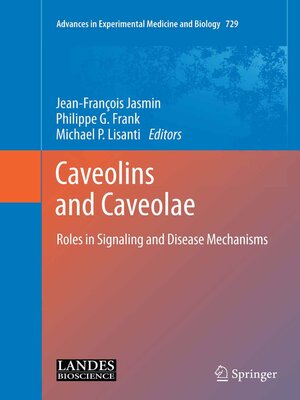Caveolins and Caveolae
ebook ∣ Roles in Signaling and Disease Mechanisms · Advances in Experimental Medicine and Biology
By Jean-François Jasmin

Sign up to save your library
With an OverDrive account, you can save your favorite libraries for at-a-glance information about availability. Find out more about OverDrive accounts.
Find this title in Libby, the library reading app by OverDrive.



Search for a digital library with this title
Title found at these libraries:
| Library Name | Distance |
|---|---|
| Loading... |
Caveolae are 50-100 nm flask-shaped invaginations of the plasma membrane that are primarily composed of cholesterol and sphingolipids. Using modern electron microscopy techniques, caveolae can be observed as omega-shaped invaginations of the plasma membrane, fully-invaginated caveolae, grape-like clusters of interconnected caveolae (caveosome), or as transcellular channels as a consequence of the fusion of individual caveolae. The caveolin gene family consists of three distinct members, namely Cav-1, Cav-2 and Cav-3. Cav-1 and Cav-2 proteins are usually co-expressed and particularly abundant in epithelial, endothelial, and smooth muscle cells as well as adipocytes and fibroblasts. On the other hand, the Cav-3 protein appears to be muscle-specific and is therefore only expressed in smooth, skeletal and cardiac muscles. Caveolin proteins form high molecular weight homo- and/or hetero-oligomers and assume an unusual topology with both their N- and C-terminal domains facing the cytoplasm.







